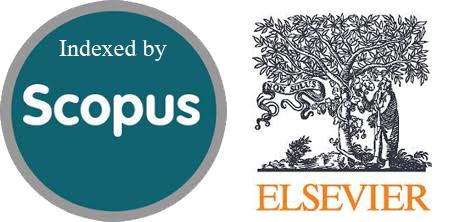Topically Applied Glycerol-Based Turmeric Extract Formulation Ameliorates Diabetic Foot Ulcer: A Case Report
DOI:
https://doi.org/10.54133/ajms.v8i1.1649Keywords:
Amputation, Curcumin, Diabetic complications, Ulcer, Wound healingAbstract
Diabetic foot ulcers (D-FUs) are a severe complication that affects up to 34% of diabetic individuals. Approximately 20% of cases result in amputation and a doubled 10-year mortality risk. Although sophisticated therapies have achieved some success, there is a need for effective alternatives. The active compound curcumin of turmeric (Curcuma longa) possesses antimicrobial, antioxidant, and anti-inflammatory properties that may facilitate wound healing. A 41-year-old male presented with a two-month duration of antibiotic-resistant D-FU and had an inadequately controlled 12-year history of type 2 diabetes. The ulcer remained unresponsive despite conventional interventions, such as antibiotics. After saline cleansing, a topical turmeric extract glycerol-based formulation was applied to the wound daily. The formulation was freshly prepared by combining 1:1 g/ml of turmeric extract powder with glycerol. The turmeric extract treatment resulted in a substantial improvement in the condition of the lesion over 35 days. Exudate and erythema decreased within seven days, the infection had resolved, and the lesion had significantly healed by day 35. This case report indicates that turmeric extract has the potential to serve as a cost-effective adjunctive therapy for chronic D-FUs. However, additional research is necessary to optimize curcumin formulation to enhance its pharmacokinetics and to elucidate curcumin wound-healing mechanisms to promote diabetic wound healing and reduce related complications.
Downloads
References
Armstrong DG, Boulton AJM, Bus SA. Diabetic foot ulcers and their recurrence. N Engl J Med. 2017;376(24):2367-2375. doi: 10.1056/NEJMra1615439. DOI: https://doi.org/10.1056/NEJMra1615439
McDermott K, Fang M, Boulton AJM, Selvin E, Hicks CW. Etiology, epidemiology, and disparities in the burden of diabetic foot ulcers. Diabetes Care. 2023;46(1):209-221. doi: 10.2337/dci22-0043. DOI: https://doi.org/10.2337/dci22-0043
Lipsky BA, Berendt AR, Cornia PB, Pile JC, Peters EJ, Armstrong DG, et al. 2012 Infectious Diseases Society of America clinical practice guideline for the diagnosis and treatment of diabetic foot infections. Clin Infect Dis. 2012;54(12):e132-173. doi: 10.1093/cid/cis346. DOI: https://doi.org/10.1093/cid/cis346
Azam MS, Azad MH, Arsalan M, Malik A, Ashraf R, Javed H. Efficacy of platelet-rich plasma in the treatment of diabetic foot ulcer. Cureus. 2024. doi: 10.7759/cureus.60934. DOI: https://doi.org/10.7759/cureus.60934
Hajimohammadi K, Makhdoomi K, Zabihi RE, Parizad N. NPWT: a gate of hope for patients with diabetic foot ulcers. Br J Nurs. 2019;28(12):S6-S9. doi: 10.12968/bjon.2019.28.12.S6. DOI: https://doi.org/10.12968/bjon.2019.28.12.S6
Parizad N, Hajimohammadi K, Goli R. Surgical debridement, maggot therapy, negative pressure wound therapy, and silver foam dressing revive hope for patients with diabetic foot ulcer: A case report. Int J Surg Case Rep. 2021;82:105931. doi: 10.1016/j.ijscr.2021.105931. DOI: https://doi.org/10.1016/j.ijscr.2021.105931
Fuloria S, Mehta J, Chandel A, Sekar M, Rani NNIM, Begum MY, et al. A comprehensive review on the therapeutic potential of Curcuma longa Linn. in relation to its major active constituent curcumin. Front Pharmacol. 2022;13:820806. doi: 10.3389/fphar.2022.820806. DOI: https://doi.org/10.3389/fphar.2022.820806
Mustafa HH, Ali OJ, Abdulrahman HA, Hassan SMA, Salih LF, Faraj SS. Enhancing cutaneous wound healing: The therapeutic potential of topical curcumin extract in a rat model. Egypt J Vet Sci. 2025;56(7):1425-1432. doi: 10.21608/ejvs.2024.279936.1966. DOI: https://doi.org/10.21608/ejvs.2024.279936.1966
Cao M, Duan Z, Wang X, Gong P, Zhang L, Ruan B. Curcumin promotes diabetic foot ulcer wound healing by inhibiting miR-152-3p and activating the FBN1/TGF-β pathway. Mol Biotechnol. 2024;66(5):1266-1278. doi: 10.1007/s12033-023-01027-z. DOI: https://doi.org/10.1007/s12033-023-01027-z
Asharib Arshad M, Arshad S, Arshad S, Abbas H. The quality of life in patients with diabetic foot ulcers. J Diabetes Metab. 2020;11(2). doi: 10.35248/2155-6156.20.11.e101. DOI: https://doi.org/10.35248/2155-6156.20.11.e101
Dhobale SA, Dhobale AD, Thanage AR, Tambe AV, Gaikwad Shital D. Formulation and evaluation of turmeric gel. Int J Adv Res Sci Commun Technol. 2022:644-647. doi: 10.48175/IJARSCT-4876. DOI: https://doi.org/10.48175/IJARSCT-4876
Ajay R, Shyam A, Kavitha PN. A study on preparation and evaluation of herbal peel off face mask. Int J Multidiscip Res. 2023;5(5):6812. doi: 10.36948/ijfmr.2023.v05i05.6812. DOI: https://doi.org/10.36948/ijfmr.2023.v05i05.6812
Estefania KV, Silalahi J, Sumaiyah S, Satria D. Formulation and evaluation of cream turmeric extract peparations from turmeric rhizomes (Curcuma domestica Val.). Indonesian J Pharm Clin Res. 2022;5(1):01-09. doi: 10.32734/idjpcr.v5i1.6479. DOI: https://doi.org/10.32734/idjpcr.v5i1.6479
Raja JM, Maturana MA, Kayali S, Khouzam A, Efeovbokhan N. Diabetic foot ulcer: A comprehensive review of pathophysiology and management modalities. World J Clin Cases. 2023;11(8):1684-1693. doi: 10.12998/wjcc.v11.i8.1684. DOI: https://doi.org/10.12998/wjcc.v11.i8.1684
Deng H, Li B, Shen Q, Zhang C, Kuang L, Chen R, et al. Mechanisms of diabetic foot ulceration: A review. J Diabetes. 2023;15(4):299-312. doi: 10.1111/1753-0407.13372. DOI: https://doi.org/10.1111/1753-0407.13372
Rapti E, Adamantidi T, Efthymiopoulos P, Kyzas GZ, Tsoupras A. Potential applications of the anti-inflammatory, antithrombotic and antioxidant health-promoting properties of curcumin: A critical review. Nutraceuticals. 2024;4(4):562-595. doi: 10.3390/nutraceuticals4040031. DOI: https://doi.org/10.3390/nutraceuticals4040031
Li Y, Zhao S, Der Merwe LV, Dai W, Lin C. Efficacy of curcumin for wound repair in diabetic Rats/Mice: A systematic review and meta-analysis of preclinical studies. Curr Pharm Des. 2022;28(3):187-197. doi: 10.2174/1381612827666210617122026. DOI: https://doi.org/10.2174/1381612827666210617122026
Agharazi M, Gazerani S, Huntington MK. Topical turmeric ointment in the treatment of diabetic foot ulcers: A randomized, placebo-controlled study. Int J Low Extrem Wounds. 2022:15347346221143222. doi: 10.1177/15347346221143222. DOI: https://doi.org/10.1177/15347346221143222
Begum F, Keni R, Ahuja TN, Beegum F, Nandakumar K, Shenoy RR. Notch signaling: A possible therapeutic target and its role in diabetic foot ulcers. Diabetes Metab Syndr Clin Res Rev. 2022;16(7):102542. doi: 10.1016/j.dsx.2022.102542. DOI: https://doi.org/10.1016/j.dsx.2022.102542
Kuai L, Zhang JT, Deng Y, Xu S, Xu XZ, Wu MF, et al. Sheng-ji Hua-yu formula promotes diabetic wound healing of re-epithelization via Activin/Follistatin regulation. BMC Complement Altern Med. 2018;18(1):32. doi: 10.1186/s12906-017-2074-8. DOI: https://doi.org/10.1186/s12906-017-2074-8
Yadav JP, Verma A, Pathak P, Dwivedi AR, Singh AK, Kumar P, et al. Phytoconstituents as modulators of NF-κB signalling: Investigating therapeutic potential for diabetic wound healing. Biomed Pharmacother. 2024;177:117058. doi: 10.1016/j.biopha.2024.117058. DOI: https://doi.org/10.1016/j.biopha.2024.117058

Downloads
Published
How to Cite
Issue
Section
License
Copyright (c) 2025 Al-Rafidain Journal of Medical Sciences ( ISSN 2789-3219 )

This work is licensed under a Creative Commons Attribution-NonCommercial-ShareAlike 4.0 International License.
Published by Al-Rafidain University College. This is an open access journal issued under the CC BY-NC-SA 4.0 license (https://creativecommons.org/licenses/by-nc-sa/4.0/).











